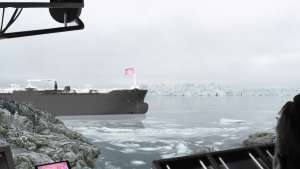The western coast of Norway is home to breathtaking views. Geographical fjords give way to sheer cliffs and crevices carving sharply into the sea. Ancient glacial erosion has cut miles inland at the western coastline. While it may be gorgeous to look at, the Norwegian coast remains exhaustive to traverse and as yet impossible to do solely by car.
Norway’s Public Road Administration has proposed an infrastructure solution that is effectively a hybrid between a bridge and tunnel - an engineering feat that would be a world first.
Submerged floating tunnels are underwater traffic tubes about 30 meters below the ocean’s surface. They seem to be the best way to overcome Norway’s unique landscape. The tunnels would be tethered to massive buoyant barges for support and would connect the cities of Kristiansand and Trondheim, cutting the current 21-hour travel time by half.
To design a way across these rocky bays, a number of variables must be considered. Each fjord has its own geological composition – differences in soil and rock density make building bridges a fragile matter. Maritime transit and the accessibility of ships must be accounted for. Preserving the natural beauty of the coastline is also part of the Norwegian government’s concern.
Eliminating the use of ferries (of which there are 7 needed to complete the journey currently) increases the trip’s economy greatly. While the infrastructure project would be a first of its kind, it would benefit from already existing designs.
Offshore oil drilling platforms and marine bridges feature the kind of architectural and engineering principles that the submerged floating tunnels of Norway would utilise.
If the project is successful, the submerged tunnels may become the stepping stone of further trans-Atlantic roadworks. Entire continents and island clusters may one day be connected with similar underwater traffic arteries.
The project is estimated to cost $25 billion to complete and should be ready for traffic by 2035 if it is approved.







